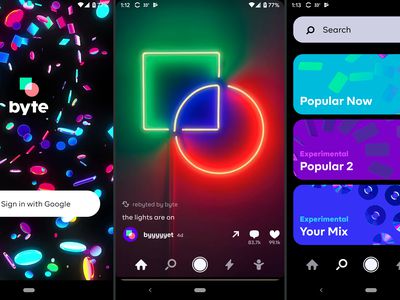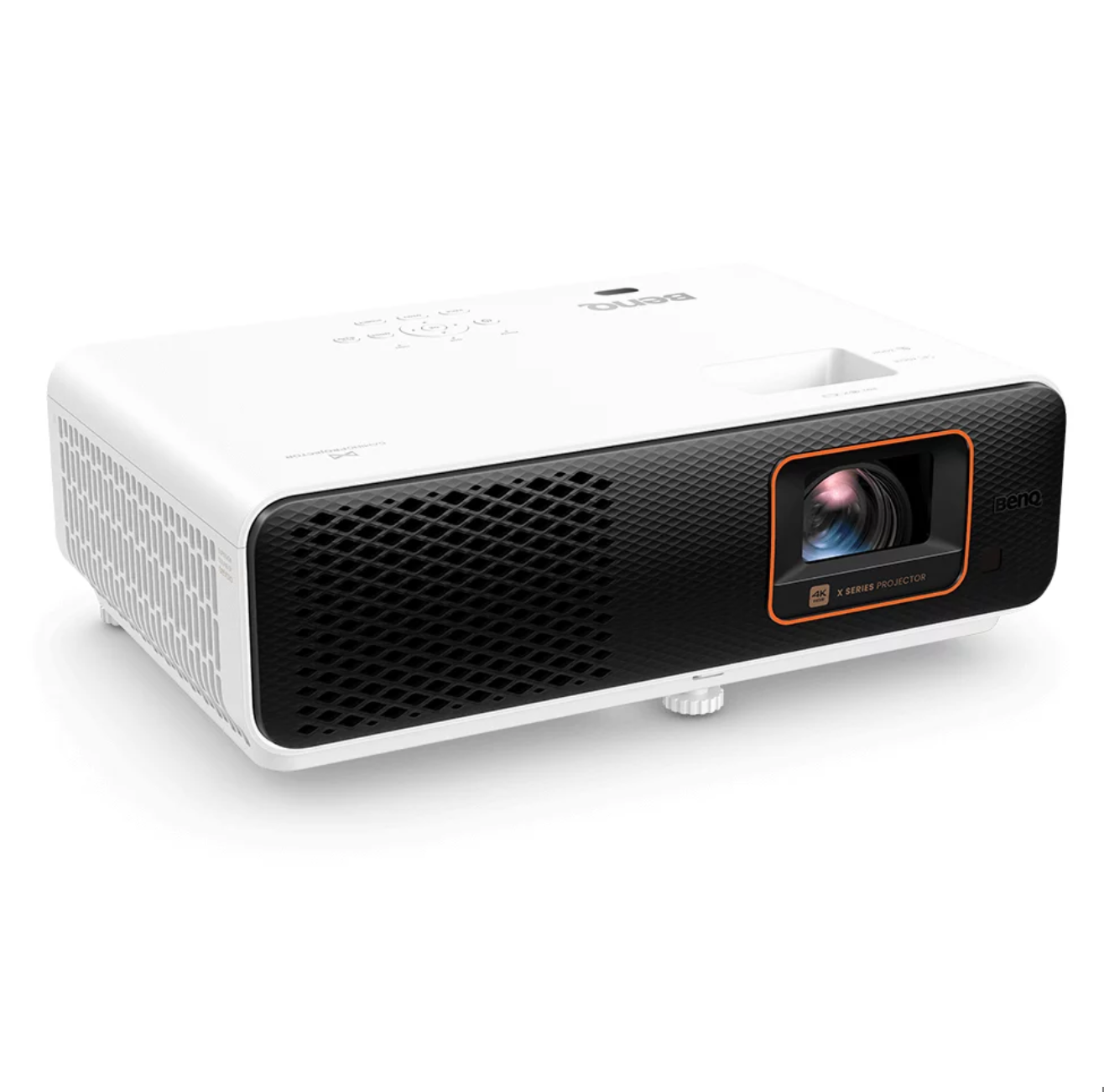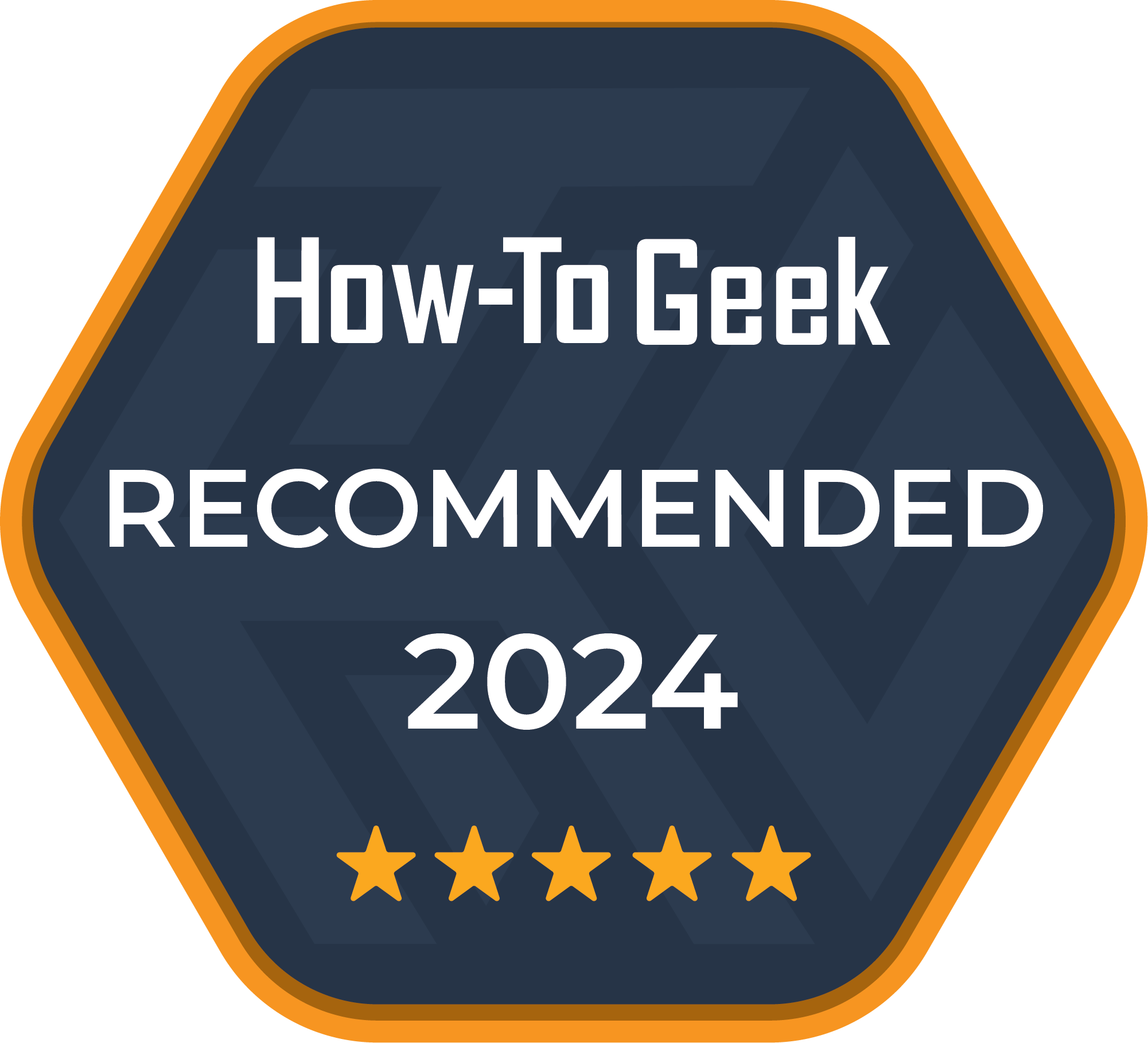
Ultimate BenQ X500i Assessment: How To Transform Any Surface Into an Immersive Game Display

Ultimate BenQ X500i Assessment: How To Transform Any Surface Into an Immersive Game Display
Key Takeaways
- BenQ’s X500i projector matches the latency and refresh rate of high-end gaming monitors.
- The X500i has a simple software interface and uses an external Android TV dongle for streaming.
- Noisy operation and other quirks may disappoint some customers.
Your puny gaming monitor is no match for BenQ’s X500i projector . With a minimum 4ms of input lag and a maximum 240Hz refresh rate, the X500i delivers the responsiveness and quality of a gaming monitor with an image that exceeds 100 inches. I’ve spent a few months with the BenQ X500i and, while this isn’t the flagship model in BenQ’s gaming lineup , it feels like a flagship product.


BenQ X500i
9/ 10
The BenQ X500i achieves a minimum 4ms of latency and a 240Hz refresh rate. It’s one of the few gaming projectors to match the quality of a proper gaming monitor, though its noisy operation and short throw distance may be a turn-off for some.
Native Resolution
3,840 x 2,160
ANSI Lumens
2200
Projection Technology
DLP
Connectivity
2 x HDMI 2.0, USB-C DP
Throw Ratio
Short (0.69~0.83)
HDR
Yes
Audio
10W built-in speakers, analog and digital output
OS
Android TV dongle included
Lamp Life
30,000 hours
Wattage
236W
Image Size
60-120 inches
Lamp Type
LED
Size
4.6 x 14.4 x 9.6in
Weight
7.93lbs
Color Depth
84% DCI-P3
Brand
BenQ
Pros
- Minimum 4ms latency in 1080p/240Hz mode
- Image is bright enough for daytime use
- External streaming dongle extends the projector’s lifespan
- Manual zoom provides variable throw ratio
Cons
- Noisy operation when 4K resolution is enabled
- Mild rainbow effect
- Low-latency mode disables keystone correction
Expand
$1699 at Amazon See at B&H Photo Video See at Best Buy See at BenQ
Solid Build Quality, Easy Setup

Andrew Heinzman / How-To Geek
While it may look modest in photos, the X500i is a very attractive and sturdy projector. BenQ didn’t fall into cliche “gamer” design and went with something much more simple—a white chassis with black and red accents. I also love the textured plastic around the X500i’s lens, as it makes the projector’s air vents feel like an intentional design choice.
The build quality is great, as you’d expect. The plastic feels substantial and doesn’t make any creaky noise when pressed. However, I was surprised by this projector’s size. At 14.4 inches wide and 9.6 inches long, it made my coffee table look comically small. The good news is that this beast only weighs about 8 pounds, so it’s light enough to safely mount on the ceiling.
Setting up the X500i is a simple affair. The focus ring is easy to dial in, and because this projector has a manual zoom lens, I didn’t need to worry too much about throw distance . Digital zoom and keystone correction functions are also included for fine-tuning, though the 2D keystone can’t compensate for awkward projection angles or uneven projection surfaces (such as my screen, which has a slight bulge in the center). And, because the X500i lacks any lens shift capabilities, keystone correction isn’t available in low-latency mode.
A solid selection of ports line the projector’s backside. Along with the standard HDMI 2.0b video ports, BenQ generously included a USB-C DisplayPort input with 5-watt power delivery for phones, tablets, cameras, and other devices that support USB-C DP Alt Mode. Both of the HDMI ports support eARC for soundbar or AVR connectivity, though the projector also has 3.5mm and digital optical outputs. BenQ did not include an ethernet port, as streaming is handled by an external Android TV dongle.
All things considered, the X500i’s internal speakers sound pretty decent. They fill the room and have some bass. You’ll encounter distortion or rattling at high volumes, but that’s to be expected. If you’re willing to spend $1,700 on a projector, you should really buy some external speakers . Even a cheap $100 soundbar will be substantially better than the projector’s built-in speaker system.
Unfortunately, the X500i is a bit noisier than I expected. The fan noise can be distracting when Eco mode is disabled, and the pixel shifting mechanism makes a high-pitched whine when the 4K resolution setting is active. All pixel-shifting mechanisms make some noise—this mechanism is just abnormally loud. Other reviewers have made the same complaint, so I know that the problem isn’t unique to my unit. I should note that I’m the only person in my home who notices the noise, and it’s something that I can ignore when watching movies.
Great Image Quality Primed for Gaming
Like BenQ’s flagship X3100i gaming projector, the X500i offers a minimum 4ms latency with a 1,080p/240Hz picture setting. Switching to 1,440p/120Hz bumps the latency to 8ms, and you’ll experience 16ms of latency at 4K/60Hz. This is the kind of performance you’d expect from a gaming monitor, not a projector. It’s fantastic, to say the least.
And because the X500i projects at 2,200 ANSI lumens, it’s bright enough to use during the day. But the projector’s color and contrast are a bit more modest—you get 84% coverage of the DCI-P3 gamut and a 600,000:1 contrast ratio. To be fair, the picture is slightly more vibrant than what I’ve seen in other DLP projectors, and I have no complaints about shadow detail.
By default, the X500i automatically adjusts its video settings to match your input source. If you choose to delve into the settings, you’re met with several options for gaming (RPG, FPS, SPG), plus the obligatory Bright and Cinema modes. I was perfectly happy with all the gaming settings, but the Bright mode had a yucky blue cast that looked bad in a dark room. The Cinema mode had the opposite problem—it was too orange. Thankfully, you can adjust these settings to taste.
Close
There are also several HDR settings on the X500i, including HDR10, HDR-RPG, HDR-FPS, and HDR-SPG. I don’t believe that HDR is essential (or very noticeable) on a consumer-grade projector. However, DLP projectors tend to look somewhat dull, so I appreciate the extra touch of vibrancy that some of the gaming-focused HDR profiles bring to the table.
Just know that you cannot play games in low-latency mode when keystone correction is enabled. This is true of all projectors that utilize digital keystone correction, as the video processing technology inevitably introduces some lag. If you need keystone correction and want to run games with minimal latency, buy a gaming projector with lens shift capabilities, such as the BenQ X3100i . Or, take measurements of your room, whip out a projector calculator , and figure out how to set up the X500i without keystone correction.
Note that this projector exhibits a mild rainbow effect. The effect is really only noticeable when viewing dark content in a very dark room. In any case, rainbow artifacts are an unavoidable consequence of DLP technology, and if you’re specifically in the market for a gaming projector, DLP is usually your best bet.
A Simple Backlit Remote Control

Andrew Heinzman / How-To Geek
The BenQ X500i remote control is perfect. It has all the buttons you’ll ever need for controlling volume, selecting input devices, or adjusting the projector’s settings. Plus, the buttons are backlit, and as you may have already noticed, the remote doesn’t have any stupid streaming shortcuts.
Some streaming devices, such as the BenQ Android TV dongle, can be controlled from this remote. That’s why it has navigation, home, and microphone keys. BenQ includes an extra remote for the streaming dongle, but the extra remote is only needed during setup. (As a quick side note, pressing the “down” button on the X500i remote turned off my Winix air purifier. I guess they use similar IR codes.)
You’ll also find a control panel on the top of the X500i. The control panel lacks any volume buttons, but you can use it to turn on the projector, select an HDMI input, and change video modes.
All Hail the Android TV Dongle!
While I understand the convenience of a “smart” TV or projector, I don’t believe that media hardware should have built-in streaming capabilities. A projector or TV should run on reliable software that’s meant to last a lifetime. Streaming should be handled by an external device , as platforms like Android TV are unreliable, ever-updating, difficult to work with, and doomed to a short lifespan.
BenQ clearly shares my opinion. The X500i does not have any built-in streaming capabilities—it’s a “dumb” projector with a reliable and simple software interface. Streaming is handled by an external Android TV dongle, which is included with the X500i and plugs into a male HDMI jack on the projector’s backside.
Installing this streaming dongle is a bit of a hassle. You have to unscrew a protective backing plate, carefully jam the dongle into a male HDMI jack, and string a USB power cable around the dongle’s backside. But you’re left with a clean and cleverly-integrated streaming solution that can be upgraded in the future.
Close
The BenQ X500i is rated for up to 20,000 hours of use in full-power mode. So, if you run the projector for five hours a day, it should last for nearly 11 years. Even if the external streaming dongle becomes too slow or buggy, the projector’s built-in software will continue working. I see this as a major selling point for the X500i and other projectors in BenQ’s gaming lineup.
The streaming dongle itself is fine—it works with all my apps, it has Netflix preinstalled (you have to sideload Netflix on some Android TV devices), and it’s about as fast as any other Android TV stick. An extra remote control is included for this dongle, but the X500i’s remote is all you need after setting up Android TV. I tossed the extra remote back in the box and didn’t find a reason to pull it out.
I’ve got just two gripes. First, the Android TV dongle struggles to maintain a fast Wi-Fi connection, so I encountered buffering on some streaming services. And I don’t understand why BenQ chose to build a male HDMI jack into this projector. Why isn’t it just a normal HDMI port? If you ever want to use the dedicated dongle input for something else, you need to buy a male-to-female HDMI cable . I doubt that the average person will need any extra inputs, especially if they’re using a soundbar or AVR, but it’s an odd decision nonetheless.
Should You Buy the BenQ X500i?

Andrew Heinzman / How-To Geek
As far as gaming projectors go, the BenQ X500i is hard to beat. Its input lag, resolution, and refresh rate are similar to that of a gaming monitor. At 2,200 ANSI lumens, the X500i is bright enough to use with the lights on, and the manual zoom function provides a variable throw distance. Plus, the projector only weighs about 8 pounds, so you can confidently mount it on the ceiling.
But you need to do a bit of math before purchasing the X500i. This is a short-throw projector, meaning that it needs to sit relatively close to your screen or wall. If you want to project a 95-inch image, for example, you only need to set the X500i about 6 feet from your projection surface (or 5 feet if you adjust the zoom lens). This projector doesn’t belong on a bookshelf against the wall—it needs to be placed on a table or mounted to the ceiling in the center of your room.
So, open a projector calculator , do some measurements, and try to decide whether the X500i is a good fit for your living room or bedroom. Consider buying a long-throw projector if the X500i’s throw distance is too short for your taste.
Pricing may also be a concern. The X500i costs $1,700, which is far more than you’d pay for a good gaming TV or monitor. And if you don’t really care about 4K resolution or ultra-low input lag, a cheaper gaming projector like the BenQ HT2060 will get the job without compromising on brightness or refresh rate.


BenQ X500i
9/ 10
The BenQ X500i achieves a minimum 4ms of latency and a 240Hz refresh rate. It’s one of the few gaming projectors to match the quality of a proper gaming monitor, though its noisy operation and short throw distance may be a turn-off for some.
$1699 at Amazon See at B&H Photo Video See at Best Buy See at BenQ
Also read:
- [New] Personalize Your Viewing Experience Building a Google Cardboard VR Setup
- [Updated] Syncopate Screen A Beginner's Guide to Mobile Video Making
- [Updated] The Ultimate Guide to 10 Leading PC VR Headsets
- [Updated] Top Shots Premium Video Cams for Slow-Motion Magic
- 2024 Approved Capturing the Moment A Practical Guide to GooGle Meetings' Screen Recordings
- 2024 Approved The Convert King's Playbook YouTube to MP4/MPEG Edition
- 2024 Approved The Ultimate Framework for Fullscreen Proficiency in Premiere
- Clear-Cut Strategies for Watermark-Free Photography
- Email & Social Media Dominance: Revolutionizing Statistics with MassMail's Content Distribution Strategy
- In 2024, Ultimate Collection 10 Excellent Photo-Background Alternators
- Leading Vocal Processing Plugins: Optimize Your Audio on Windows/Mac
- Micro-Movie Plot Draft for 2024
- Outdoor Entertainment Boosted with SunBrite TV's Robust 55-Inch 4K HDR Smart TV - Resilient & Reliable
- Resolved: Error in iTunes Audio Settings Discovered
- Troubleshooting Guide: Fixing Windows Compatibility Issues with Logitech G935 Microphone
- Title: Ultimate BenQ X500i Assessment: How To Transform Any Surface Into an Immersive Game Display
- Author: Mark
- Created at : 2024-12-21 23:59:39
- Updated at : 2024-12-25 01:32:45
- Link: https://some-guidance.techidaily.com/ultimate-benq-x500i-assessment-how-to-transform-any-surface-into-an-immersive-game-display/
- License: This work is licensed under CC BY-NC-SA 4.0.